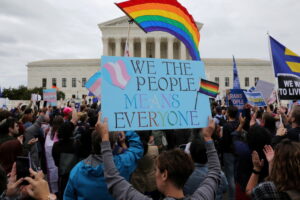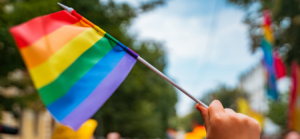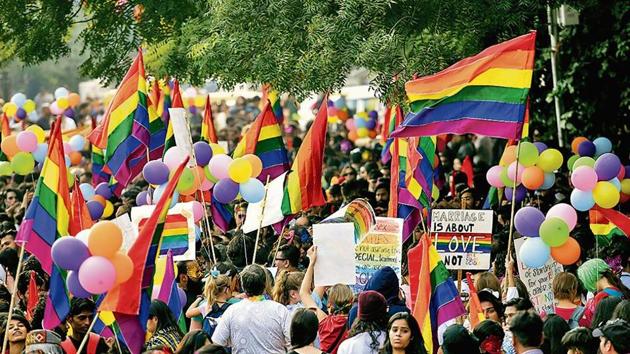LGBTQ culture refers to the shared experiences, expressions, and identities of lesbian, gay, bisexual, transgender, and queer individuals and communities. It encompasses a diverse range of aspects, including rights and activism, subcultures, representation in media and entertainment, fashion, art and literature, symbols and pride events, challenges and discrimination faced by the LGBTQ community, global perspectives, mental health, education, religion, family dynamics, and even sports. Let’s delve into the rich tapestry of LGBTQ culture and explore its various dimensions.
Contents
LGBTQ Rights and Activism

LGBTQ rights and activism are important aspects of promoting equality and ensuring that lesbian, gay, bisexual, transgender, and queer individuals have equal rights and protections. These LGBTQ rights encompass a wide range of issues, including legal recognition of same-sex relationships, protection against discrimination, access to healthcare, and the right to live without fear of violence or persecution.
LGBTQ activism refers to the efforts and actions taken by individuals and organizations to advocate for LGBTQ rights. Activism can take many forms, such as protests, rallies, lobbying, community organizing, educational campaigns, and legal challenges. The goal of LGBTQ activism is to create societal change, challenge discriminatory practices and attitudes, and promote inclusivity and acceptance.
LGBTQ Subcultures and Communities
LGBTQ subcultures and communities are diverse and vibrant, providing spaces for individuals with different sexual orientations, gender identities, and expressions to connect, find support, and celebrate their identities. Furthermore, these communities offer a sense of belonging, empowerment, and solidarity for LGBTQ individuals who may face unique challenges and experiences.
Here are a few examples of LGBTQ subcultures and communities:
- Gay and Lesbian Communities: These communities primarily focus on individuals who identify as gay or lesbian. They often have established social networks, bars, clubs, and organizations that cater to the specific needs and interests of gay and lesbian individuals.
- Bisexual Community: This community embraces individuals who are attracted to people of both their gender and other genders. Bisexual individuals may face distinct challenges related to bi-erasure and biphobia, so they often seek support and understanding within this community.
- Transgender Community: The transgender community comprises individuals whose gender identity differs from the sex assigned to them at birth. Transgender people often come together to support one another, share resources, and advocate for transgender rights and visibility.
- Queer Community: The term “queer” is an inclusive umbrella term that encompasses individuals who do not fit into traditional heterosexual or cisgender categories. Furthermore, the queer community is known for its celebration of diversity and non-conformity, providing a space for those who identify outside of normative sexual and gender identities.
LGBTQ Representation in Media and Entertainment

LGBTQ representation in media and entertainment has seen significant progress over the years, although there is still work to be done to ensure authentic and diverse portrayals across all forms of media. Representation plays a crucial role in shaping societal perceptions, breaking stereotypes, and promoting understanding and acceptance of LGBTQ individuals.
Historically, LGBTQ characters and storylines in media were often marginalized, stereotyped, or portrayed in a negative light. However, there has been a noticeable shift towards more inclusive and positive representation in recent years. Furthermore, some key aspects of LGBTQ representation in media and entertainment include:
- LGBTQ Characters: Many TV shows, films, and books now feature LGBTQ characters as the main or supporting characters, allowing for more complex and realistic portrayals. These characters are no longer solely defined by their sexual orientation or gender identity but are portrayed as multi-dimensional individuals with diverse personalities, backgrounds, and storylines.
- Coming Out Narratives: Coming out stories have long been a staple of LGBTQ representation, showcasing the personal journeys and challenges faced by individuals as they reveal their sexual orientation or gender identity. While these narratives still have value in highlighting the LGBTQ experience, it’s important to also show a wide range of stories beyond the coming out process.
LGBTQ Fashion and Style
LGBTQ fashion and style encompass a wide range of expressions and aesthetics that reflect the diverse identities within the LGBTQ community. Fashion and personal style are powerful tools for self-expression, celebration, and the exploration of individuality and gender expression.
Here are some key aspects of LGBTQ fashion and style:
- Gender Nonconformity: LGBTQ fashion often challenges traditional gender norms and embraces gender nonconformity. Furthermore, many LGBTQ individuals use clothing and style as a means to express their true selves and break free from societal expectations of how men and women should dress.
- Androgyny: Androgynous fashion blurs the lines between traditionally masculine and feminine aesthetics. It embraces a more gender-neutral or ambiguous style that can be appealing to individuals across the gender spectrum.
- Drag Fashion: Drag culture has significantly influenced LGBTQ fashion and style. Drag performers often push boundaries with elaborate costumes, theatrical makeup, and over-the-top looks that challenge gender norms and celebrate self-expression.
LGBTQ Art and Literature
LGBTQ art and literature have played significant roles in expressing LGBTQ experiences, challenging societal norms, and fostering understanding and acceptance. Also, LGBTQ artists and writers have used various mediums to explore themes of identity, love, sexuality, discrimination, and resilience, creating powerful and impactful works that resonate with diverse audiences.
Here are some key aspects of LGBTQ art and literature:
- LGBTQ Representation: LGBTQ art and literature often provide much-needed representation for LGBTQ individuals and their experiences. It allows LGBTQ people to see themselves reflected in the stories, characters, and artwork, validating their identities and fostering a sense of belonging.
- Queer Narratives: LGBTQ art and literature frequently explore narratives that are unique to the LGBTQ experience. These narratives can encompass themes such as coming out, self-discovery, navigating relationships and families, and grappling with societal pressures and discrimination.
- Challenging Norms and Stereotypes: LGBTQ art and literature have been instrumental in challenging societal norms and stereotypes surrounding gender, sexuality, and identity. They offer alternative perspectives and counter mainstream narratives, providing a platform for marginalized voices and broadening understanding and acceptance.
Challenges and Discrimination Faced by the LGBTQ Community

The LGBTQ community faces various challenges and forms of discrimination that can significantly impact their lives and well-being. While progress has been made in many parts of the world, it’s essential to recognize that discrimination and marginalization continue to persist. Here are some key challenges faced by the LGBTQ community:
- Legal Discrimination: In numerous countries, laws that criminalize same-sex relationships, engage in discriminatory practices, or limit LGBTQ rights still exist. These laws perpetuate stigma, restrict personal freedoms, and subject LGBTQ individuals to legal consequences and harassment.
- Social Stigma and Prejudice: LGBTQ individuals often face social stigma, prejudice, and discrimination in their everyday lives. This can manifest in various ways, such as verbal or physical abuse, bullying, rejection by family and friends, or being denied access to services and opportunities.
- Lack of Legal Protections: In many jurisdictions, LGBTQ individuals do not have adequate legal protections against discrimination in employment, housing, healthcare, or public accommodations. This can lead to unequal treatment, limited opportunities, and vulnerability to mistreatment or harassment.
- Violence and Hate Crimes: LGBTQ individuals are disproportionately targeted for hate crimes, violence, and harassment. Homophobic and transphobic attitudes can fuel acts of violence, which can have severe physical, emotional, and psychological consequences for victims.
- Mental Health Challenges: LGBTQ individuals often face higher rates of mental health challenges, including depression, anxiety, and suicidal ideation. These disparities can be attributed to the cumulative effects of discrimination, stigma, rejection, and the pressures of concealing or navigating their identities.
LGBTQ Culture and Religion
LGBTQ culture and religion intersect in complex ways, and the experiences of LGBTQ individuals within religious contexts can vary greatly depending on the specific religion, denomination, and cultural context. It’s important to note that there is a wide range of perspectives and attitudes within religious communities towards LGBTQ issues, and not all religious traditions view homosexuality, bisexuality, or transgender identities in the same way.
- Acceptance and Inclusion: Some religious groups and denominations are accepting and inclusive of LGBTQ individuals. They may interpret their religious texts and teachings in ways that affirm and celebrate LGBTQ identities, relationships, and contributions within their faith communities.
- Reconciliation: In some religious contexts, there is an ongoing dialogue and effort to reconcile LGBTQ identities and experiences with religious teachings. Furthermore, this may involve engaging in theological discussions, interpreting scriptures from an inclusive perspective, and advocating for LGBTQ-affirming practices and policies within religious institutions.
- Religious LGBTQ Communities: LGBTQ individuals often find supportive communities within religious settings, where they can worship, practice their faith, and find acceptance among like-minded believers. Furthermore, these communities may be specifically created for LGBTQ individuals or may be LGBTQ-inclusive within existing religious institutions.
- Challenges and Rejection: LGBTQ individuals can face significant challenges and rejection within religious communities that hold conservative or traditional views on sexuality and gender. Furthermore, this can lead to exclusion, discrimination, and even condemnation based on religious teachings that deem same-sex relationships or gender nonconformity as sinful or immoral.
- Internal Struggles: LGBTQ individuals who are deeply connected to their religious faith may experience internal conflicts as they navigate their sexual orientation, gender identity, and religious beliefs. This can involve reconciling personal identity with religious teachings, seeking spiritual guidance, or deciding whether to remain in or leave their religious communities.
Conclusion
LGBTQ culture encompasses a vast array of experiences, identities, and expressions. It is a testament to the resilience and strength of LGBTQ individuals who have fought for their rights and worked towards creating a more inclusive society. Furthermore, by understanding, celebrating, and advocating for LGBTQ culture, we can contribute to a world that embraces diversity and promotes equality for all.
Life may sometimes be challenging for people from the LGBTQ community, but Online LGBTQ Counseling can help. Get experienced LGBTQ therapists at PrideMantra: Book a trial LGBTQ therapy session.


